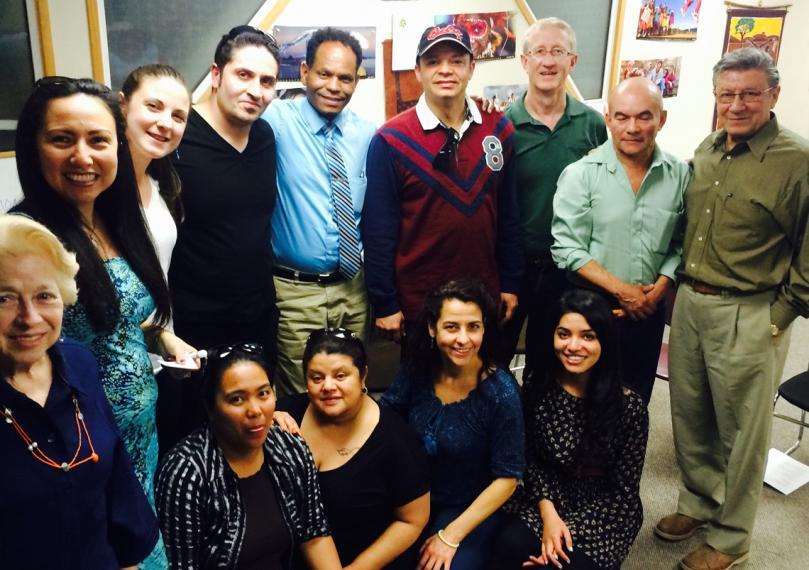Attracting immigrants to rural Ontario

As a way of ensuring their long-term viability, Ontario’s rural communities should do more to attract and keep newcomers in their municipalities – and a University of Guelph professor has developed some recommendations on how to best do that.
Changing demographics are leaving many rural areas struggling with declining populations, and although immigration is a key solution, most of the province’s immigrants prefer to settle in large urban centres like Toronto, Ottawa, Hamilton or London.
Only about 5,000 out of approximately 113,000 annual newcomers to the province make their new homes outside of large urban areas, says Prof. Wayne Caldwell of the School of Environmental Design and Rural Development, leaving rural municipalities challenged with maintaining jobs, health and long term care, education and other services in the face of dwindling populations.
Based on his extensive research into the issue, funded through the Ontario Ministry of Agriculture, Food and Rural Affairs-University of Guelph Partnership, and the best practices he has seen in municipalities across Ontario, particularly Oxford, Perth and Lanark Counties and District of Cochrane, he has some advice on how to be an attractive destination for immigrants.
Creating a sense of welcoming
“What we found speaks to some of the changes in immigration patterns,” says Caldwell. “How do you create a sense of welcoming to encourage people to feel comfortable in a community if their faith or foods aren’t present?”
That sense of welcoming is key among Caldwell’s recommendations. He found the most successful communities work at creating connections between newcomers and established community members by being open to new ideas and customs and celebrating diversity, such as local events built around food, for example.
“It’s important to spend some time and resources to get people together and help them make connections, whether with long-time community members or other immigrants of different backgrounds who may have lived in the area for a long time but still feel a sense of camaraderie with newcomers,” he explains, adding the efforts of individual people in the community can make a big difference in getting people to feel connected.
The establishment of local multicultural centres, like the one in place in Timmins, can also be an important step in making a community welcoming and can provide immigration settlement and support services under one roof.
No-nonsense access to services
Another important recommendation is for municipalities to adopt a no-wrong-door policy. This means changing the approach to service by training municipal staff to be aware of all of the available services and resources so they can help people get what they need even if it falls outside of their specific responsibility or jurisdiction.
“We know our system and can find our way around but are we doing our best to help someone get what they need who doesn’t know where to start? Can we instead of just sending them away with a no, give them a recommendation about where to go and who to speak with, for example? ” asks Caldwell.
Services for immigrants, such as English as a Second Language, are also important and should be tailored to local needs. For example, newcomers may also need some technical language skills if they’re working in a specific field or sector, such as agriculture.
The most successful communities have integrated immigration into economic development strategy, have strong political will and leadership at the municipal level, and encourage collaboration with government and with existing like-minded organizations.
Immigrants in rural municipalities who participated in Caldwell’s study spoke positively about the lower cost of living, sense of safety and opportunity, and lifestyle in smaller communities. Conversely, they expressed a need for more services specific to newcomers including language training and how to access resources, and dealing with feelings of isolation.
“Many municipalities have local immigration partnerships, but we want to encourage enhanced involvement by communities in local immigration efforts,” he says.
Planning for growth
Caldwell recommends municipalities interested in attracting newcomers start with determining their immigration needs by assessing their population and establishing the risk level of declining numbers for the long term future. Focus on how existing services and resources can serve as a starting point, and involve newcomers in the community as key players in the process to ensure their needs are being met, he suggests.
And since many newcomers aren’t aware of smaller municipalities, a branding strategy can be an important tool. Timmins, for example, has created a brand it uses to promote the region including in Go Train and airport advertisements designed to appeal to both tourists and immigrants.
Doing nothing to attract newcomers is not a sustainable option, but there are also long time frames associated with immigration strategies, Caldwell cautions.
“We are raising the importance of immigration as a coping strategy for rural communities. If you're not thinking about this and doing anything active at a community level to attract newcomers, your future will be quite bleak,” he believes.
Caldwell was assisted by four graduate students on the research project, PhD student Natasha D’Souza and masters students Brianne Labute, Bakhtawar Khan and Pallak Arora. He is publishing a book on the results this winter, as well as developing a short summary of key findings and recommendations available to municipal politicians, rural planners and economic development staff.
The final reports on the case study municipalities, which include recommendations, are available on Caldwell’s website.